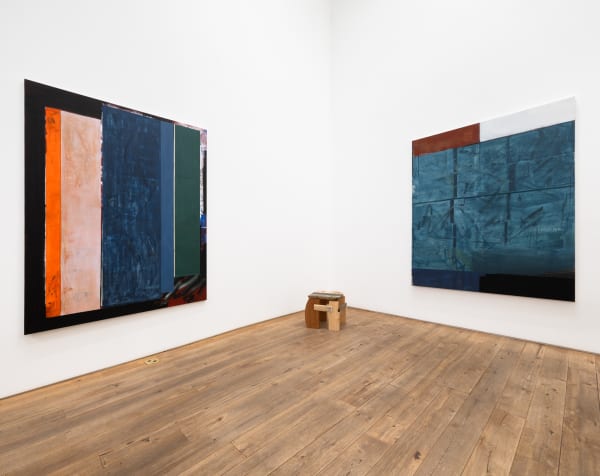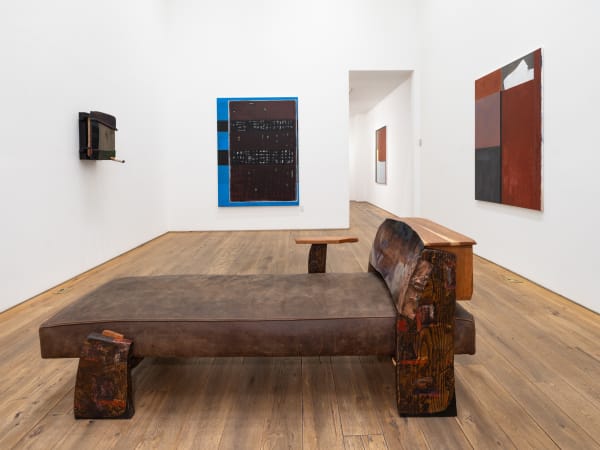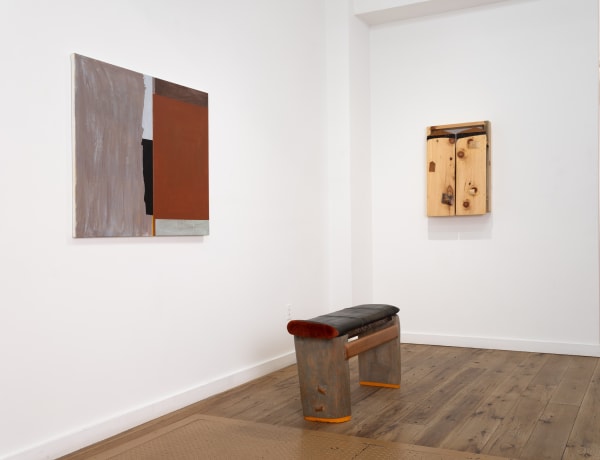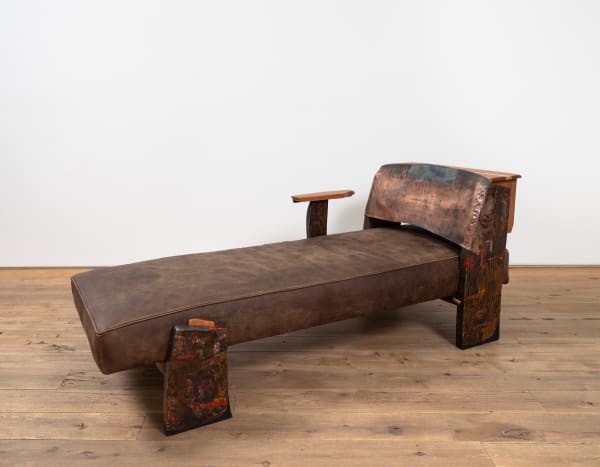Luke Malaney + Caleb Weiss
The gallery is proud to present Caleb Weiss + Luke Malaney, a two-man exhibition on view from June 20th to July 31st.
Though divergent in medium and technique, Malaney and Weiss share a common impulse: reflecting on the creative process through nonrepresentational and structured work from different sides of the art-making spectrum that explore an inventive engagement with material. The exhibit creates a dynamic dialogue between two distinct yet resonant practices— Malaney’s meditative sculptures and Weiss’s abstraction.
The work of New York-based painter Caleb Weiss emerges from an engagement with the visual residue of everyday life— fragments of the built environment, found images, and incidental marks—transforming these raw materials into a language of abstraction that feels both familiar and newly constructed. Each work is built upon a scaffolding of newspaper, serving as both a structural foundation and a conceptual entry point—an initial framework through which to engage with image, paint application, and the painting’s inherent geometry. Working in dialogue with the history of abstraction in New York—from the painterly surfaces of Abstract Expressionism to the material clarity of Post-Minimalism—Weiss approaches these traditions with a focus on process and the tension between formal structure and intuitive mark-making.
The compositions begin in a chaotic grid of images, gradually reaching a resolution where color, scale, and the rectangle become dominant forces. From a distance, the paintings could evoke the structured facades of modernist architecture; up close, however, hand-painted lines—applied without tape—reveal subtle variation and multiple layers. Fluid pigment, applied with brush and sponge, moves unevenly across the fragile newspaper surface, where rips, scratches, and seams reveal the painting’s physical construction as an object. The paintings invite a double reading: as composed images and as constructed, time-bound objects shaped by accumulation and alteration. In navigating this tension, Weiss asks the viewer to consider not only what is depicted, but how the act of looking itself can alter our experience of abstraction in daily life.
Luke Malaney is a Brooklyn-based artist and designer whose work blurs the line between sculpture and functional design. Trained under a classical Roman woodworker, Malaney exhibits the same propensity for telling stories using everyday objects, using abstract forms to communicate the age-old tale of a carpenter’s craft. In his work, wood becomes so much pillowy cotton, and everyday furniture items join a dreamlike fantastical realm, forcing viewers to engage with these quotidian items as aesthetic propositions. Whatever use value they possess is paralleled by a fundamentally non-utilitarian component, as viewers wish to know their textured
surfaces and contoured perimeters more intimately than any ordinary piece of furniture.
Weiss and Malaney both seem to be after the same thing: for viewers to engage with their respective traditions—abstract painting and carpentry—as more than mere
formulaic crafts. In the face of long traditions of abstruse abstraction and purely functional woodworking, both artists prove their respective disciplines have both
aesthetic and utilitarian components—that is, if you’re willing to look for them.







